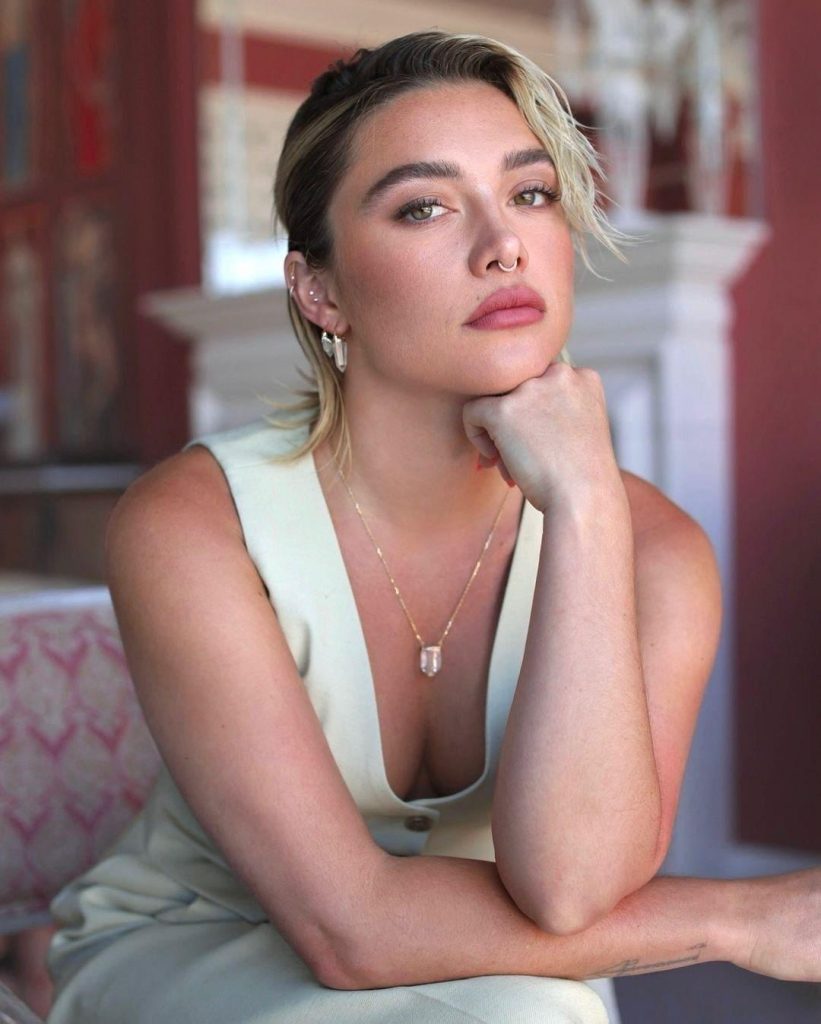When Ruby Cooper turned forty-five, she didn’t panic — but she noticed. “It wasn’t about wrinkles,” she laughs. “It was about how I felt when I woke up. My energy was low, my skin looked tired, and my focus wasn’t the same.” Like many women balancing career and family, Ruby wanted to age gracefully, not desperately.
But between collagen powders, antioxidant pills, and endless ‘miracle’ serums, she was overwhelmed. “I didn’t want to chase youth,” she says. “I wanted to protect vitality.” That mindset led her on a journey into the world of natural anti-aging supplements — and what she discovered changed her health and perspective entirely.
The Realization: Aging Isn’t the Enemy
Ruby remembers the moment she decided to change her habits. “I saw a picture of myself at my daughter’s graduation,” she says. “I looked happy, but my skin had lost its glow — and so had my energy.” Instead of turning to cosmetic fixes, she visited a nutritionist. “She told me something I’ll never forget,” Ruby recalls. “‘Aging isn’t decline; it’s data. Your body is telling you what it needs.’”
That advice resonated deeply. Ruby began researching how nutrition and supplements influence biological aging. She found studies from the Harvard Medical School showing that oxidative stress and chronic inflammation are major drivers of visible and internal aging. “It wasn’t about fighting wrinkles,” Ruby says. “It was about fighting oxidation.”
Oxidation, she learned, is like rust for the body — caused by free radicals from stress, sun exposure, poor diet, and pollution. “That’s where antioxidants come in,” she says. “They’re like internal repair crews.” From that day, she made it her mission to find supplements that worked with her biology, not against it.
Discovering Nature’s Anti-Aging Toolbox
Ruby started small. “The first thing my nutritionist recommended was vitamin C — not for immunity this time, but for collagen.” According to the Cleveland Clinic, vitamin C is essential for collagen synthesis, helping maintain skin firmness and repair tissue. “Within weeks, my skin felt hydrated again,” Ruby recalls.
Next came vitamin E, another potent antioxidant. “It works alongside vitamin C,” she explains. Studies from the National Institutes of Health (NIH) show that vitamin E helps reduce UV-induced damage and supports immune function — both critical for slowing visible aging.
But Ruby’s biggest discovery was Coenzyme Q10 (CoQ10). “I had never heard of it,” she says. “But my research showed it’s like a spark plug for your cells.” CoQ10 fuels mitochondrial energy — the power source of every cell. As we age, levels decline, leading to fatigue and slower regeneration. “I started taking 100 mg daily, and within two weeks, I wasn’t hitting that 3 p.m. wall anymore.” The Mayo Clinic confirms CoQ10 supports both cardiovascular and skin health, making it one of the most evidence-based anti-aging supplements available.
The Collagen Comeback
Ruby’s next addition was collagen peptides — a trend she initially dismissed as marketing hype. “I rolled my eyes,” she admits. “But after I read clinical studies showing increased skin elasticity with hydrolyzed collagen, I gave it a try.” One landmark study from the Journal of Cosmetic Dermatology found that daily collagen supplementation for eight weeks significantly improved skin hydration and elasticity in women aged 35–55. “By the second month, I saw it,” Ruby says. “My skin didn’t sag as much around the jawline, and my nails stopped breaking.”
Her collagen routine became simple: a scoop of unflavored powder in her morning smoothie, paired with vitamin C for enhanced absorption. “Consistency is everything,” she says. “You can’t expect results overnight. Think of it as skincare from the inside out.”
The Power of Polyphenols and Plant Extracts
Ruby’s journey didn’t stop at vitamins. She soon discovered plant-based compounds with remarkable anti-aging potential. “I started reading about polyphenols — antioxidants found in green tea, grapes, and turmeric,” she says. These natural compounds combat inflammation, one of the root causes of premature aging.
One of her staples is resveratrol, a compound found in red grapes and berries. Research published by Harvard Health suggests resveratrol may activate certain genes associated with longevity and cellular repair. “It’s like giving your body a software update,” Ruby jokes.
She also added curcumin — the active compound in turmeric — for its anti-inflammatory power. “I drink golden milk at night,” she says. “It helps me sleep and keeps my skin calm.” Studies from the National Library of Medicine show curcumin reduces oxidative damage and supports joint and brain health. “It’s nature’s multitasker,” she says.
Another favorite: green tea extract (EGCG). “I swapped my second coffee for matcha,” she explains. EGCG, or epigallocatechin gallate, is a powerful antioxidant that helps protect cells from UV and pollution damage. The National Institutes of Health confirms its benefits for metabolism, heart function, and skin protection. “My skin tone evened out after a few months,” Ruby says. “It was subtle but real.”
Omega-3s, Collagen, and the Mind-Body Connection
One surprising benefit of her new regimen was emotional. “When your cells are nourished, your mood follows,” Ruby says. She began taking omega-3 fatty acids from algae oil — a plant-based alternative to fish oil. The Mayo Clinic notes omega-3s support heart, brain, and joint health while reducing inflammation — the foundation of most aging-related decline.
“I used to get brain fog,” Ruby shares. “After two months of consistent omega-3 intake, I felt sharper.” Science supports her experience: research from the Harvard School of Public Health confirms that omega-3s may help slow cognitive aging and support emotional balance.
Building an Evidence-Based Supplement Routine
By now, Ruby’s cabinet looked like a mini apothecary. “It’s easy to get carried away,” she laughs. “But I learned that too much of a good thing can backfire.” She created a schedule — alternating antioxidants and spacing fat-soluble vitamins to avoid overload. Her typical day looks like this:
- Morning: Vitamin C (500 mg), collagen peptides, and green tea.
- Midday: CoQ10 (100 mg) and resveratrol (250 mg) with lunch.
- Evening: Omega-3 (1,000 mg) and curcumin tea before bed.
“It’s not a strict rule,” she says. “But structure helps.” She pairs supplements with nutrient-dense meals — salmon, spinach, avocado, and berries — and stays hydrated. “Supplements aren’t shortcuts,” she emphasizes. “They’re partners to good habits.”
To verify her choices, Ruby cross-referenced her regimen with peer-reviewed research and registered dietitians. “If I read something on social media, I don’t buy it until I check WebMD or the NIH database.”
What She Avoids
Ruby also learned to avoid synthetic blends and unverified “miracle anti-aging capsules.” “If the label promises eternal youth, run,” she says. She stays clear of megadoses, caffeine-infused supplements, and anything without transparent sourcing. “I look for third-party testing — that’s the difference between quality and hype.”
She also warns about mixing too many antioxidants. “They can compete for absorption,” she explains. Instead, she cycles her regimen seasonally. “In winter, I focus on vitamin D and C. In summer, I emphasize hydration and polyphenols.”
The Emotional and Philosophical Shift
What started as a vanity project became something deeper. “When I began feeding my body instead of fighting it, aging stopped feeling scary,” Ruby says. “Now, when I look in the mirror, I see strength — not loss.”
Her energy returned, her digestion improved, and her skin regained its glow. But more importantly, her mindset changed. “Anti-aging isn’t about freezing time,” she says. “It’s about extending quality — being able to hike, laugh, and think clearly at seventy.”
Ruby often shares her story online, where she encourages women to approach wellness as empowerment, not perfection. “The goal isn’t to erase your age — it’s to express it beautifully,” she says. “And natural supplements can help you do that.”
Key Takeaways from Ruby’s Journey
- 1. Choose function over fashion: “Trendy doesn’t mean effective. Look for peer-reviewed science.”
- 2. Combine supplements with real food: Nutrients work best in synergy with whole foods.
- 3. Be patient: “It took decades to age — give your body months to rebuild.”
- 4. Hydrate: “Water is the cheapest anti-aging secret on earth.”
- 5. Sleep and move: Supplements can’t replace basic self-care.
Today, Ruby still takes her morning vitamins — but she does it with gratitude, not fear. “Every capsule is a choice to invest in my future self,” she says. “And that feels powerful.” She hopes more people will see aging not as decline, but as design. “Your body isn’t breaking — it’s adapting,” she says. “Give it what it needs, and it rewards you with resilience.” As for her skin? “It’s softer, more even, and I smile more,” Ruby says. “Maybe that’s the real anti-aging secret — joy.
If it’s too much, don’t watch (23 Photos)


If it’s too much, don’t watch (23 Photos)
Appearance style is an integral part of one’s image. It carries a vast amount of information about a woman. Through style, one can infer a woman’s personality, preferences, emotions, intelligence, social status, and, of course, age. Style is the collective concept of the image a woman has chosen for herself. It represents the harmonious unity of outward appearance and inner content.
«Fashion passes, style remains,» these words belong to Coco Chanel. By choosing a specific clothing and makeup style, a woman can follow fashion changes as much as she wants, while still preserving her own style. Stylists distinguish the following main styles: classic, business, «Chanel,» romantic, sporty, avant-garde, folklore, fantasy, diffuse, and «Glamour» style. Each of these styles has its own characteristics.



















